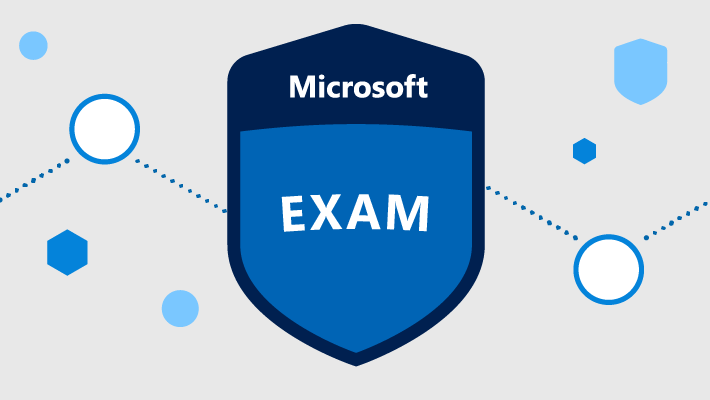To szkolenie jest odpowiednikiem wycofanego szkolenia 20740 Installation, Storage, and Compute with Windows Server 2016
To szkolenie jest przeznaczone dla specjalistów informatycznych, którzy posiadają podstawową wiedzę na temat systemu Windows Server. Zaprojektowane jest dla profesjonalistów, którzy mają główną odpowiedzialność za zarządzanie magazynowaniem i obliczeniami przy użyciu systemu Windows Server 2016. Adresowane jest do profesjonalistów, którzy potrzebują zrozumieć scenariusze, wymagania oraz opcje przechowywania i obliczeń dostępne i stosowane w systemie Windows Server 2016.
Profil uczestnika
To szkolenie jest przeznaczone dla specjalistów informatycznych, którzy potrzebują podnieść swoje umiejętności w obszarze funkcjonalności magazynowania i obliczeń systemu Windows Server 2016.
Czego się nauczysz?
Moduł 1: Instalacja, aktualizacja i migracja serwerów i obciążeń pracy
Ten moduł wyjaśnia, jak przygotować się do instalacji systemu Windows Server 2016, w tym Server Core. Moduł ten wyjaśnia również, jak zaplanować strategię aktualizacji i migracji serwera. Ponadto moduł ten wyjaśnia, jak przeprowadzić migrację ról serwera i obciążeń pracy w obrębie i między domenami. Wreszcie ten moduł wyjaśnia, jak wybrać model aktywacji na podstawie charakterystyk środowiska.
Lekcje
Laboratorium: Instalacja i konfiguracja Server Core
Moduł 2: Konfigurowanie lokalnego przechowywania
Ten moduł wyjaśnia, jak zarządzać dyskami i woluminami w systemie Windows Server 2016.
Lekcje
Laboratorium: Konfigurowanie lokalnego przechowywania
Moduł 3: Wdrażanie rozwiązań przechowywania w przedsiębiorstwie
Ten moduł wyjaśnia, jak zrozumieć bezpośrednio podłączane przechowywanie (DAS), sieciowe przechowywanie (NAS) i sieciowe przechowywanie (SAN). Wyjaśnia także cel usługi Microsoft Internet Storage Name Service (iSNS), mostkowania centrów danych oraz wejścia-wyjścia wielokrotnego (MPIO). Ponadto ten moduł porównuje Fibre Channel, Internet Small Computer System Interface (iSCSI) i Fibre Channel Over Ethernet (FCoE), oraz opisuje, jak skonfigurować udostępnianie w systemie Windows Server 2016.
Lekcje
Laboratorium: Planowanie i konfigurowanie technologii i komponentów przechowywania
Moduł 4: Wdrażanie przestrzeni magazynowej i deduplikacji danych
Ten moduł wyjaśnia, jak wdrażać i zarządzać przestrzenią magazynową oraz deduplikacją danych.
Lekcje
Laboratorium: Wdrażanie przestrzeni magazynowej
Laboratorium: Wdrażanie deduplikacji danych
Moduł 5: Instalacja i konfiguracja Hyper-V oraz maszyn wirtualnych
Ten moduł wyjaśnia, jak instalować Hyper-V oraz konfigurować przechowywanie i sieciowanie na serwerach gospodarza Hyper-V. Ponadto wyjaśnia, jak konfigurować i zarządzać maszynami wirtualnymi Hyper-V.
Lekcje
Laboratorium: Instalacja i konfiguracja Hyper-V
Moduł 6: Wdrażanie i zarządzanie kontenerami systemu Windows oraz Hyper-V
Ten moduł wyjaśnia, jak wdrażać kontenery systemu Windows i Hyper-V. Ponadto wyjaśnia, jak instalować, konfigurować i zarządzać kontenerami za pomocą Windows PowerShell i Docker.
Lekcje
Laboratorium: Instalacja i konfiguracja kontenerów
Moduł 7: Przegląd wysokiej dostępności i odzyskiwania po awarii
Ten moduł wyjaśnia, jak planować rozwiązania wysokiej dostępności i odzyskiwania po awarii przy użyciu maszyn wirtualnych Hyper-V. Ponadto moduł opisuje, jak wykonywać kopie zapasowe i przywracanie systemu Windows Server 2016 oraz danych za pomocą funkcji Kopiowania zapasowego systemu Windows Server.
Lekcje
Laboratorium: Planowanie i wdrażanie rozwiązania wysokiej dostępności i odzyskiwania po awarii
Moduł 8: Wdrażanie klastrowania awaryjnego
Ten moduł wyjaśnia, jak tworzyć i zarządzać klastrem awaryjnym. Ponadto opisuje, jak wdrażać wysoką dostępność i klastrowanie rozciągnięte dla lokalizacji.
Lekcje
Laboratorium: Wdrażanie klastrowania awaryjnego
Laboratorium: Zarządzanie klastrowaniem awaryjnym
Moduł 9: Wdrażanie klastrowania awaryjnego z Hyper-V w systemie Windows Server 2016
Ten moduł wyjaśnia, jak wdrażać maszyny wirtualne Hyper-V w klastrowaniu awaryjnym. Ponadto opisuje kluczowe funkcje dla maszyn wirtualnych w środowisku klastrowanym.
Lekcje
Laboratorium: Wdrażanie klastrowania awaryjnego z Hyper-V w systemie Windows Server 2016
Moduł 10: Wdrażanie równoważenia obciążenia sieciowego
Ten moduł wyjaśnia, jak planować i konfigurować wdrożenie klastra NLB. Ponadto zapewnia przegląd równoważenia obciążenia sieciowego (NLB) i klastrów NLB.
Lekcje
Laboratorium: Wdrażanie NLB
Moduł 11: Tworzenie i zarządzanie obrazami wdrożeniowymi
Ten moduł wyjaśnia, jak tworzyć i zarządzać obrazami wdrożeniowymi przy użyciu narzędzi Microsoft Deployment Toolkit (MDT). Ponadto opisuje różne obciążenia w środowisku maszyny wirtualnej.
Lekcje
Laboratorium: Użycie MDT do wdrażania systemu Windows Server 2016
Moduł 12: Zarządzanie, monitorowanie i utrzymywanie instalacji maszyn wirtualnych
Ten moduł wyjaśnia, jak zarządzać procesem aktualizacji za pomocą WSUS. Ponadto zapewnia przegląd narzędzi monitorowania systemu Windows PowerShell Desired State Configuration (DSC) oraz systemu Windows Server 2016.
Lekcje
Laboratorium: Wdrażanie WSUS i aktualizacje
Laboratorium: Monitorowanie i rozwiązywanie problemów systemu Windows Server 2016
Firma jest Autoryzowanym Ośrodkiem Szkoleniowym MICROSOFT Silver Learning
Możesz u nas podejść do egzaminu Pearson VUE
Spółka posiada wpis do ewidencji placówek niepublicznych Nr ew. ES.VIII.4320-6/p.n./2003 wydany z upoważnienia Prezydenta Miasta Łodzi
 |
 |
Zachęcamy do skorzystania z możliwości dofinansowania szkoleń oferowanych przez naszą firmę. Dostępne rozwiązania:
Skontaktuj się z nami, aby uzyskać więcej informacji. Oferujemy pełne wsparcie w tym procesie.
Zapraszamy!
|
|
|
Przewidziany egzamin do szkolenia: 70-740
Zapisz się na egzamin już dzisiaj! Kontakt do Centrum Egzaminacyjnego: it@ntg.pl tel: 502 147 093 lub zapisz się przy pomocy formularza.


Najbliższy termin: Prosimy o kontakt
Najbliższy termin: Prosimy o kontakt
Najbliższy termin: Prosimy o kontakt
Najbliższy termin: Prosimy o kontakt
Najbliższy termin: Prosimy o kontakt
Najbliższy termin: Prosimy o kontakt
Najbliższy termin: 18-02-2026 09:00
Najbliższy termin: 18-12-2025 09:00
Najbliższy termin: Prosimy o kontakt
Najbliższy termin: Prosimy o kontakt
Najbliższy termin: 15-12-2025 09:00
Najbliższy termin: 18-12-2025 09:00
